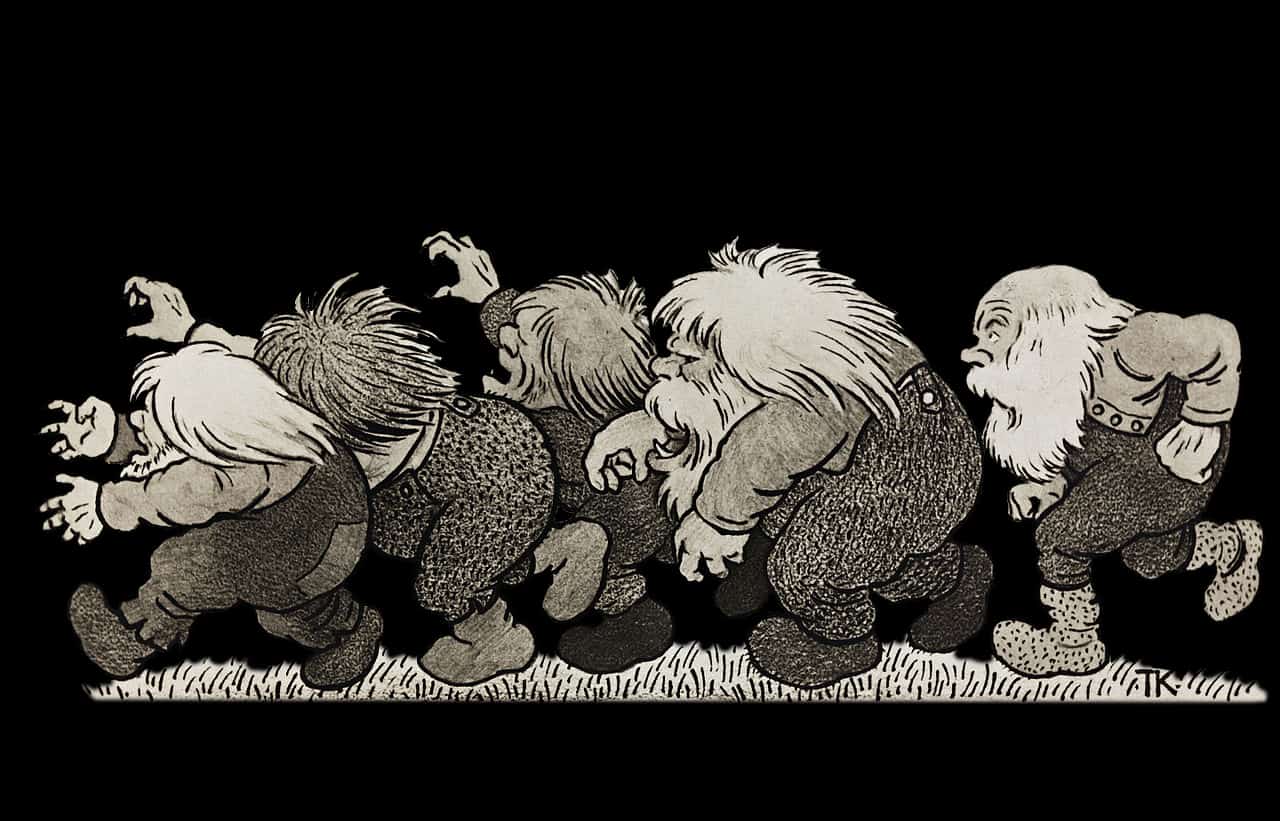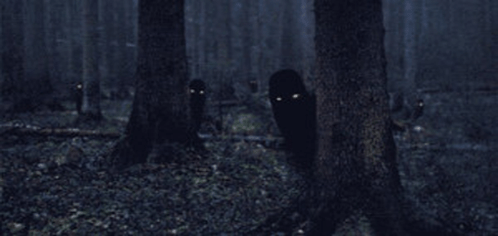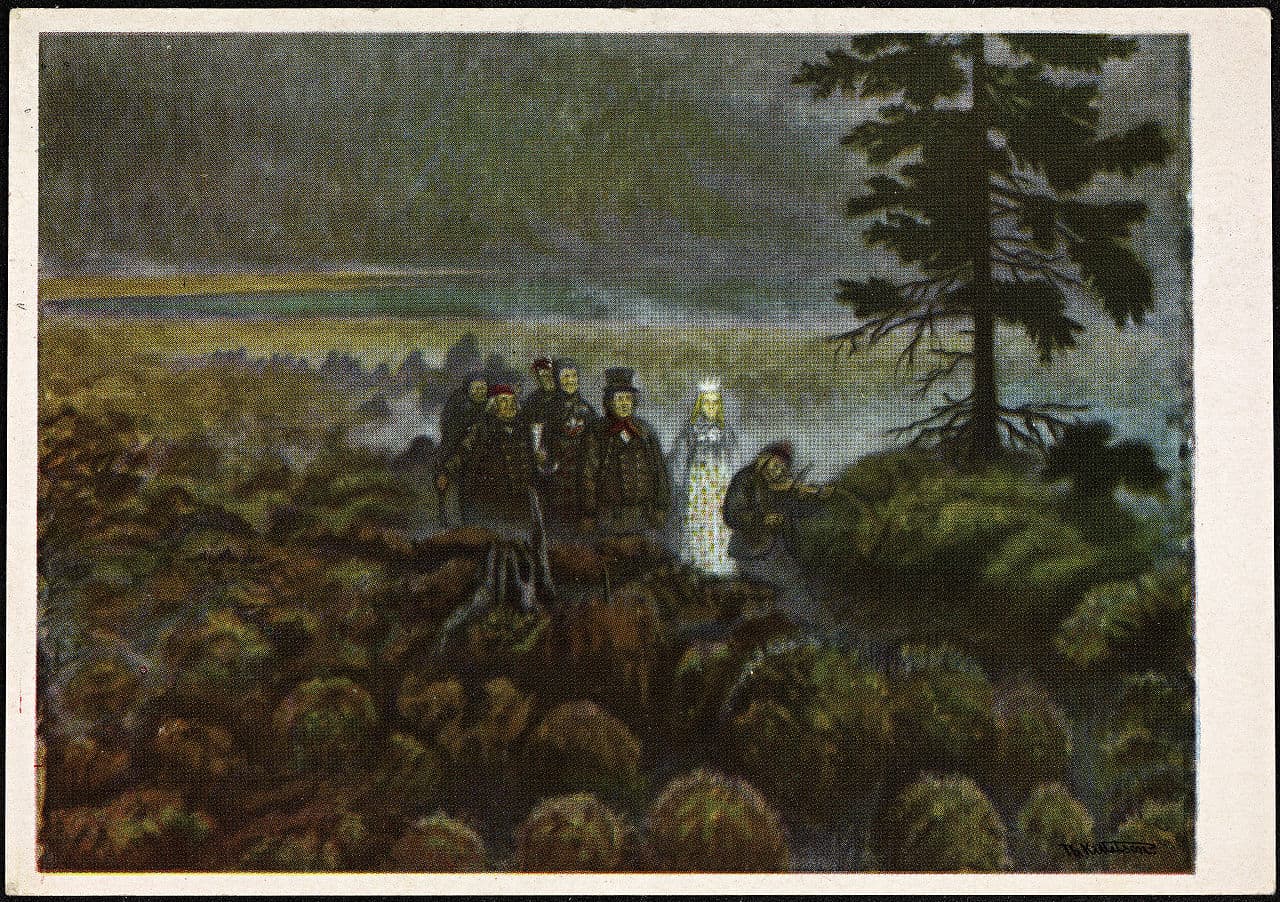In Nordic folklore, you’ll find the wights in several varieties. Both wights related to farms, land and sea as well as forests.
What do they look like?
In Nordic folklore, you’ll find the wights in several varieties. Both wights related to farms, land and sea as well as forests.
Most describe them as small creatures that look like ordinary people and live in underground societies. Sometimes, they’re described as similar to ordinary people in both length and appearance. Both beautiful and ugly, or they didn’t distinguish themselves from us at all (much as the trolls).
Some sources say that they could change their size, from very small to the same size as ordinary people.
Their clothing also seems to have varied as much as ours. Sometimes they were dressed in red, sometimes white, sometimes grey or neutral, but often happy colourful clothes (or a colourful hat).
Some of the modern sources say they only dressed in grey, but I think it’s more likely that the colours varied.
Hair colour and hairstyle could also be varied, but the underground women in the north usually had very long hair.
There are also stories that the wights can shape-shift or become invisible. It is usually said that they are transformed into a toad or frog, or maybe a striped worm or an ant, so people pay attention and avoid hurting these.
Etymology
The Scandinavian words for wight (vätte/vette) comes from the Old Norse vættr, which basically means “(supernatural) creature”, and is related to the English wight and German wicht.
Some believe that the Wights get their English name from their appearance. In some stories, they’re described as pale and ‘wight’ is a homonym to the word ‘white’. Though, it is also known that the word Wight is derived from the Old English ‘wiht’, meaning ‘thing’ or ‘creature’, and relates to the Dutch/German term ‘wicht’, meaning ‘little child’. This most likely refers to the fact that wights are sometimes described as either incredibly thin and/or short in stature.
The Wights have Cattle
Like trolls, they had, especially in stories from Norrland, cattle that they let out to pasture in the forests or among the mountains.
In some records, there are expressions such as “the bears are the pigs of the wights” or “the elk is their big ox” and so on.
Animals, which for various reasons deviated from the normal, such as cows that were bright white or gave a lot of milk, could be associated with the supernatural. Even animals that turned up unexpectedly from nowhere were considered to belong to the underground-dwellers.
Their animals were considered better than other animals, they were both fat and beautiful. If something made from steel was thrown over the animal, it was said that you got power over it. But this could lead to animosity, so you needed to be careful.
They can be dangerous if offended
They usually live in harmony with us humans but can use their magical powers if people have done something that the Wights don’t like, for example, damaged their house or have in any other way treated them badly. They would get back at you so people made sure not to make them upset.
They often guard the environment they are in. It can be a lake or forest, or another place in nature. Anyone who goes into this environment should do this with due respect to not attract the anger of the wight. To make sure not to have to face the rage of the wights, one could put out food on so-called wight mounds.
As revenge for disturbances, damage and other infringements, they can, for example, give you bad luck with animals, make you sick, or bring you poverty. Sometimes, they took their revenge out on the children by sucking the children’s fingers and toes so that it got hurt and they cried hysterically.
If the house or buildings they live under are mismanaged, the wights move away. In addition, the wights get cranky and can cause a lot of problems before moving.
If you did something even worse, for example, destroyed their home, they could burn up your whole house. Wights sometimes even got the blame for arson fires when their anger took over.
Sometimes, wights are accused of causing traffic accidents. In Iceland, it is even common practice to consult the wights and the elves in areas where you plan to build. This applies to both building and road construction.
On the E4 highway north of Gävle in Sweden, there have been many accidents over the years, especially at a place called Skarvberget. When a newspaper investigated the matter more closely, they encountered stories of wights, gnomes, trolls and creatures being said to cause these accidents.
Rules of Conduct in Relation to the Wights
When walking along a forest road or path, you should be careful not to walk in the middle of it, because there was where the underground people walked (which, of course, were invisible). Because if you forced them to get off the road, you could fall out of favour with them.
The underground people also had their own paths that they travelled on. If anyone disturbed the road or built on it, they retaliated by destroying buildings and tools or causing disease for the one who was staying there.
A common action before pouring the boiling water was shouting something like: “Watch out down there!”
The warning is so that the invisible could move out of the way. If you didn’t do that, the wights could punish you with illnesses or accidents.
My mother talked about this when I was around 9 years old. She’s not the folklore type otherwise, but this thing was something she said.
According to an old tradition, everything that ends up on the floor belongs to the farm wights. You shouldn’t clean up until the wights have taken what they want. If you keep well with them, you were able to get gifts and other benefits of a successful alliance.
Anyone who provides help to the underground people and does a favour for them could be greatly rewarded.
Among the treasures mentioned, silver spoons appear to be a recurring gift. Other things are gold and precious stones. Although the gift you got may look not so nice initially, you need to take good care of it because it may transform overnight.
The wash water for young children who have not yet been baptised should not get thrown out without care.
It is usually mentioned that one should put hot coal from the fire in the water before it was poured out.
In addition to this, the children’s clothes shouldn’t be hung out to dry after the sun went down. If these guidelines were not followed, there was a risk that the underground-dwellers could take the child.
If you want some form of contact with the wights or any other power, there are some things to think about:
- Be polite and respectful. Both to the wights and the area you’re in.
- Be selfless in your contact with them. Don’t sacrifice to get something for yourself. Sacrifice to give a gift, or to thank for something. Or just to get in touch. Only when they know that you’re unselfish, they might decide to help you when you ask. They don’t have much understanding of your needs or desires and they don’t like being treated as your servants. Always remember that is should be an equal exchange.
- They don’t like bright sunlight or electrical lighting. So pick a different time than mid-day on a sunny day.
- Don’t leave any trash behind
Stories about the Wights
There are lots of stories about the wights:
Kerstin Karlsten, born 1856 from Kvärlöv, Sweden spoke of this one mother who had nine children. The youngest got taken by the wights. It was found under the bed, against the wall. The wights had taken it but hadn’t harmed it.
Adults could also be taken. Sometimes, it was a simple explanation of how a person had gotten lost and been away for a long time, but sometimes it happened that the person disappeared forever. Adults being taken is also said about mountain trolls.
The place where the underground people live could be difficult to determine. So it could happen that a barn had to be moved when it was built in a place where they lived.
Several stories speak of how a farmer is sought out by a mysterious figure who takes him down to his home under the barn and shows how the pee and droppings ran right into their bed or on their dining table.
In that situation, there was nothing else to do but to move the animals, or at worst in the whole barn.
The same thing could also apply to house building.
This type of story is the most common in relation to the wights.
Another common story is about how a woman or a woman had to step in as midwife for them.
When the woman was doing some kind of job on the farm, for example, milking the cows, a stranger came running and begged her with distress in his voice to help his wife. The man took the woman to a door she had never seen before and they then stepped into a beautiful house where a woman lay in one of the rooms.
She helped her to give birth and wrapped her newborn baby in one of her garments. After she left, the house and the door disappeared without a trace.
The next morning, the woman saw that there was a pile of precious silver spoons on her table. It was her thanks for the help the day before.
The underground people could also come to a cottage and ask for shelter. When they were invited they held a big party. Hundreds of people came and participated in the festivities, and both food and drink were all of a sudden plentiful.
When they were finished, all the guests disappeared without a trace. Other variations describe how it was rather difficult to get rid of the guests and that it was only when the Christian God’s name was uttered that they disappeared.
There are stories about how single girls were courted by the underground people, but it was usually men who were said to have different love relationships with underground people.
In some legends, a mysterious girl approaches a stable boy. He somehow gets power over her – it could be that she came in through a hatch in the barn while he shovels manure and the steel of the shovel went over her head. Then she got stuck until he one day happened to reveal how he first met her and she disappeared forever through the same hatch as she once came.
In other stories, they mutually decided to marry. Such a marriage was appealing because her family was considered wealthy and could pay a large dowry.
Stories of other-worldly marriages were also told about the Mara and the Hulder.
There are, of course, tales about wights in the old Icelandic stories. In Egil’s Saga or Egil Skallagrimsson’s saga, the hard-handed hero Egil is cranky with the Norwegian king Eirik Blodøks (Eric Bloodaxe).
Because of this, he puts a curse on him where he commands all land wights to flee the land of the king.
Because the wights are associated with the land and its wealth, the result of leaving an area could be that its wealth dies out.
In the so-called Poetic Edda, wights are also mentioned, among other things they help with a child-delivery.
In another Icelandic handwritten text, Grágás (Grey Goose), it is warned not to make sacrifices to wights.
Similar expressions are also found in medieval legal texts, suggesting that the belief in wights was widely spread, but that it was not accepted by the church.
The exiled archbishop Olaus Magnus wrote a story about the Nordic peoples in the 16th century where he said that ‘these spirit beings that people thought they saw were nothing but the Devil’s deception’.
Here’s a story which was written down by Edin Brännström, Gällivare, Lappland in Sweden in 1929:
There was a man who lived unmarried on his farm. Then a young beautiful woman kept coming to him. But he never knew where she came from and she often came during the days, but she disappeared from time to time.
He fell in love with her and began to talk to her about marriage. After a while, she promised to marry him if he did as she told him.
She said that was one of the underground people. And then she said that there’s a hole there low on the wall which is where I come from. But he thought the whole thing couldn’t possibly be true.
Then she said “Now that I come you, we will get married. But you have to immediately plug the hole when I enter. And then she would stay and be his wife.
She was a great wife to him and had several children. But at one point when she was in bed after childbirth, he joked and said: “I’ll take that plug out of the wall now“. She had been there for so long so she was probably staying with him, he thought.
But she said: “You shouldn’t do that because then I will disappear forever“.
He was joking around and didn’t believe it. But when he took the plug out of the hole, she disappeared from the bed with the child, and never came back again, even though he mourned.
Random Facts
Let’s finish off with some random facts:
According to Landnámabók, the older Icelandic law prescribed that the dragon in the bow of a long boat must be taken down before it approached land, or the land wights (landvættir) could be startled. They were said to protect Iceland against unwelcome visitors. Four land wights also act as shield holders for Iceland’s coat of arms: a bull, an eagle, a dragon and a mountain giant.
Fossils of Belemnites, an extinct order of double-calved octopuses were called wight candles by people in the southernmost part of Sweden and in Denmark. These fossils were believed to be candles left behind by the wights where they had danced and played in a location. The wight candles were also believed to be able to protect against such diseases that the wights caused.
Vätteros (Lathraea squamaria) is a parasitic Snapdragon-like plat which lacks chlorophyll. The botanist Elias Fries gave it this name during the latter part of the 19th century because it spends most of its life underground.
Common Toothwort/Lathraea squamaria, photo by Vladimir Lobachev on Wikimedia Commons
Wights played an important role in the opening ceremony for the Winter Olympics in Lillehammer in 1994.
I hope you enjoyed this summary of the wights from Scandinavian folklore.
Remember to share it with your friends and subscribe to the blog.
Use the buttons below and on the left to share it, and you’ll find the subscription form below.












I love the histories of the little people!
thanx for sharing
How would you say “Watch out down there!” in the languages of Scandinavia?
My pleasure 🙂
Swedish: Se upp där nere!
Norwegian: Se opp der nede!
Wonderful. Of course little people exist. Legends from all over the world cannot be wrong!
Thank you for your wonderful account.